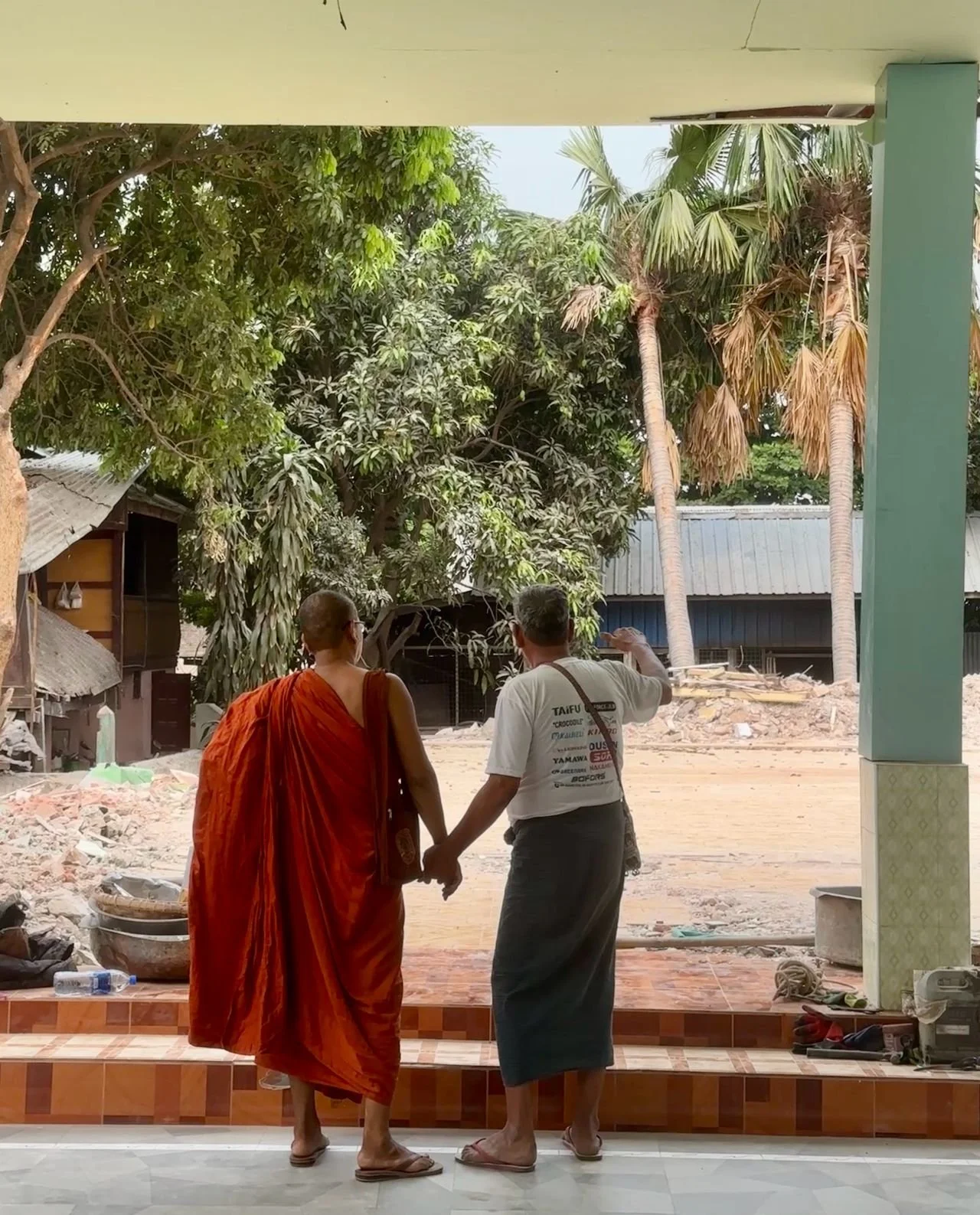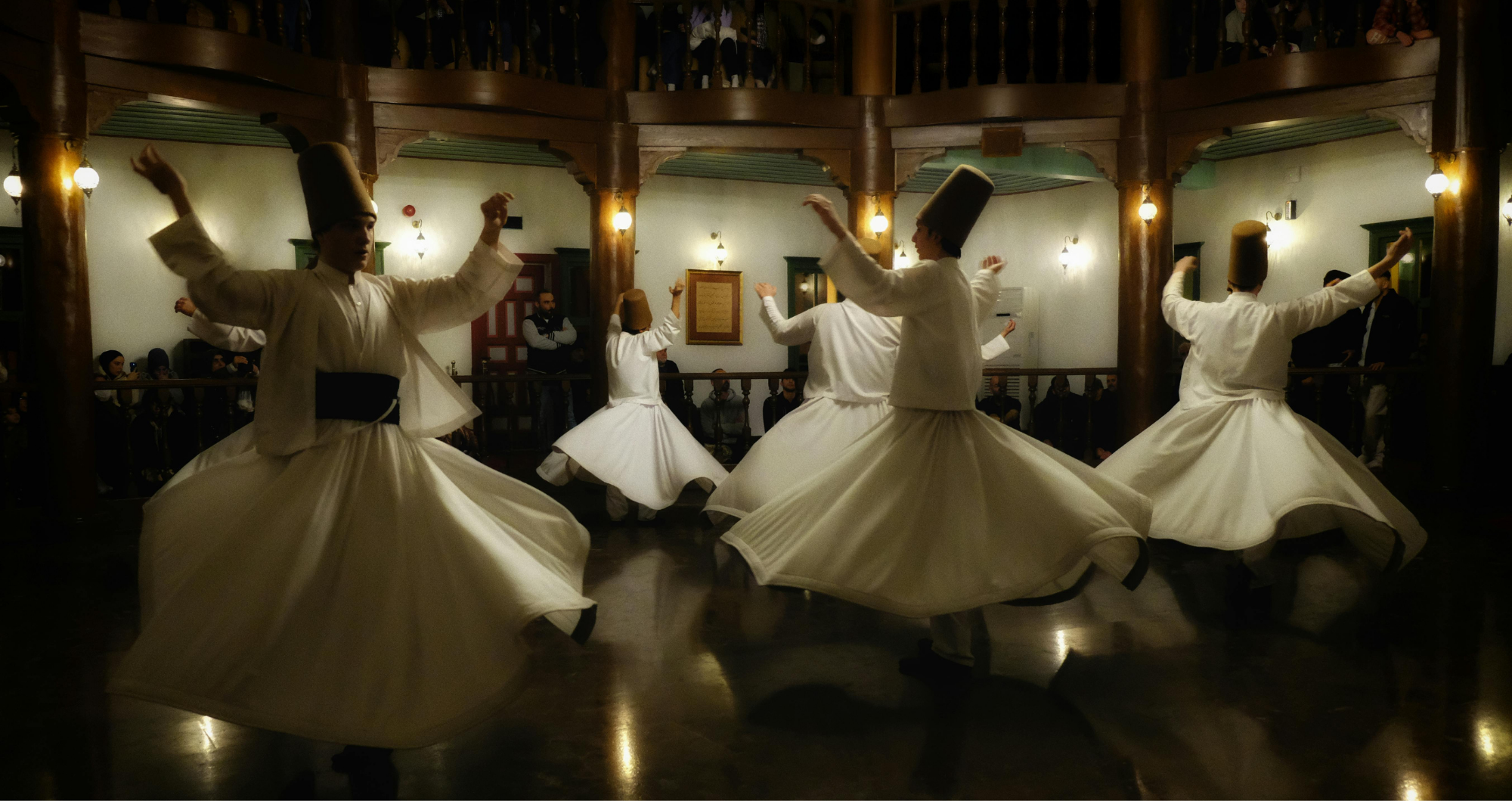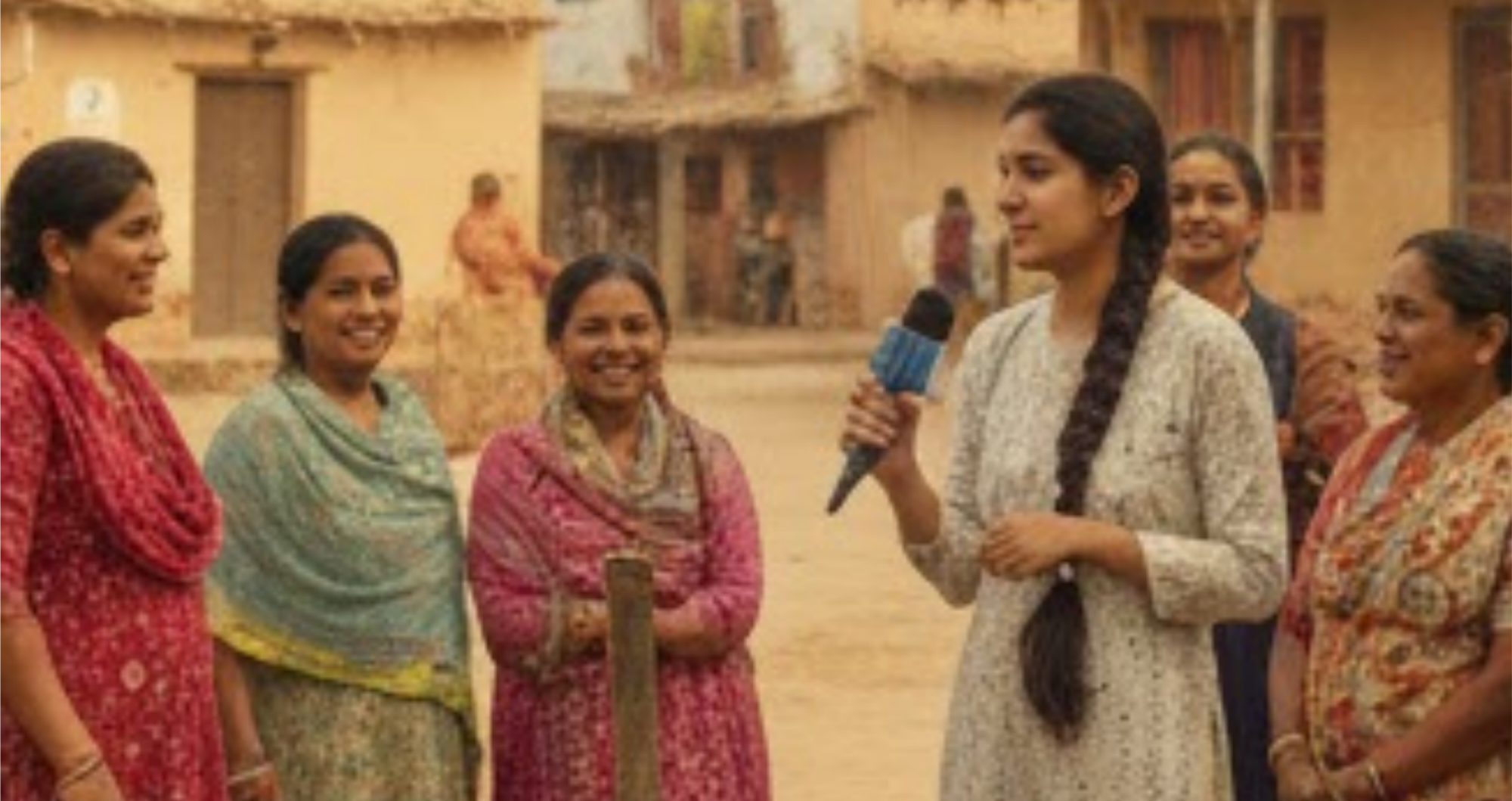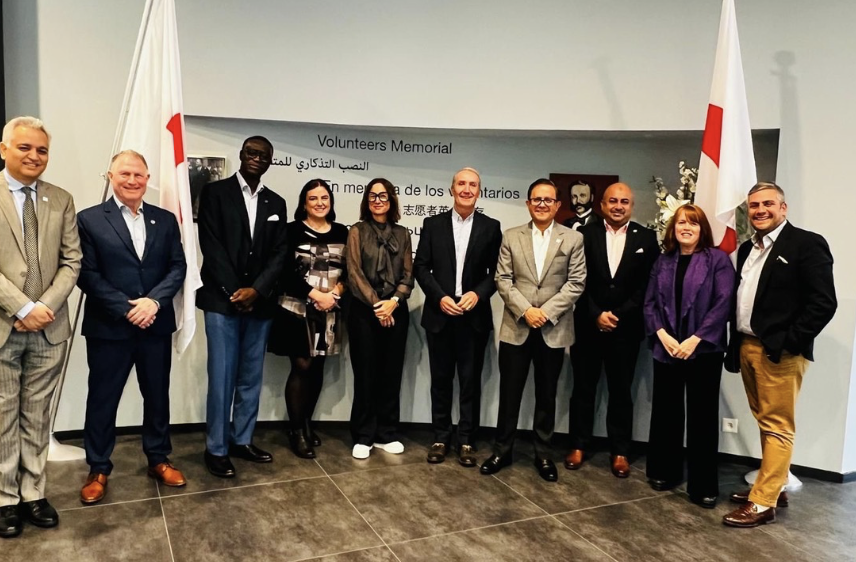Written By Jonathan Moyal
Reimagining How We Learn Peace
What if every young person grew up learning to navigate conflict with confidence instead of fear? What if empathy and collaboration were as fundamental to education as reading and writing? This is the vision that drives Nonflict: a world where peace is not something taught after crisis, but something practised daily — in classrooms, workplaces, communities, and even in the technologies we build.
The challenge is clear. We have built societies that train people to compete and defend but rarely to understand and connect. Conflict is inevitable, yet the skills to transform it are not universally taught. The result is a world that knows how to fight, but not how to listen. Nonflict reimagines this entirely. It invites a future where learning empathy is as accessible as learning to code, and where technology itself helps us rediscover what it means to be human.
Familiar Tools, Radical Accessibility
Nonflict is both a practical methodology and a digital learning ecosystem. It exists as an accessible online platform offering interactive modules, facilitator guides, and community spaces. Nonflict AI, an integrated chatbot and coaching tool, extends the experience by allowing users to practise conversations and receive real-time feedback, making peace education both personal and portable.
For anyone who has studied non-violent communication, positive psychology, restorative practice, or change management, Nonflict will feel familiar. That familiarity is its strength. Rather than reinvent the wheel, the Nonflict approach weaves together proven practices into a single, practical framework designed for everyone—regardless of age, education, or background.
“At its heart are three deceptively simple steps: Understand yourself and the other, Understand your shared reality, and Co-create your ideal reality."
In a world that often treats peace skills as elite knowledge, this is a radical move. Nonflict is about democratisation, not novelty. It takes high-impact tools once siloed in classrooms, boardrooms, or therapy sessions and places them in the hands of ordinary people.
At its heart are three deceptively simple steps: Understand yourself and the other, Understand your shared reality, and Co-create your ideal reality. By practising these steps, young people learn to clarify their needs, listen deeply to others, and design outcomes that meet everyone’s deeper interests. The process feels less like a lecture and more like a skill that can be picked up and used immediately—at school, at work, and at home.
Photo credit: Million Peacemakers.
Why the 3.5% Matters
Political scientist Dr. Erica Chenoweth’s research shows that when roughly 3.5 percent of a population engages in sustained, non-violent action, movements become almost impossible to stop (Chenoweth & Stephan, Why Civil Resistance Works: The Strategic Logic of Nonviolent Conflict, Columbia University Press, 2011). Imagine what that could mean for the 1.8 billion young people alive today. Even a fraction of them equipped with conflict-transformation skills could create ripples large enough to shift entire societies. Nonflict offers a pathway to reach that tipping point—not through abstract ideals but through practical, learnable habits.
Meeting Youth Where They Are
Good intentions alone are not enough. Traditional peace education often relies on dense manuals and classroom lectures that struggle to resonate with a generation raised on interactivity. Handing a teenager a text-heavy curriculum on conflict resolution can feel like handing them a rotary phone.
That is why Nonflict embraces gamified learning. Interactive scenarios, role-play challenges, and earned badges turn abstract principles into lived experiences. Learners are not simply reading about empathy; they are practising it, testing it, and feeling it. They receive real-time feedback on their communication style, listening skills, and ability to build consensus.
Gamification does more than hold attention. It enables experiential learning at scale, allowing thousands of young people in different countries to practise together. It also reframes peacebuilding as creative and rewarding, not solemn or unreachable. In the same way that fitness apps have normalised exercise for millions, gamified modules can normalise empathy, active listening, and collaborative problem-solving.
The Human Heart of Nonflict AI
Alongside gamified learning sits Nonflict AI, a multilingual digital coach that extends these skills beyond the classroom. On a phone or tablet, a young person can input a real scenario—a disagreement with a teacher, a family conflict, a community dispute—and receive guidance on how to navigate it using the Nonflict way.
The most remarkable part of building Nonflict AI has not been the technology itself but the values embedded in it. Our team spent months teaching the system to be empathetic, inquisitive, and authentic, so that users could suspend their disbelief and feel they were in a genuine conversation, not simply interacting with a machine.
This work led to a simple insight: if we can teach AI to practise empathy, surely we can teach any human. Empathy is not a mystical trait bestowed on a few; it is a practice that can be learned, rehearsed, and strengthened. For many participants, that realisation is the spark of hope.
“Empathy is not a mystical trait bestowed on a few; it is a practice that can be learned, rehearsed, and strengthened.”
Nonflict AI also recognises that not all conflicts are equal. Power, privilege, and identity shape how people experience and resolve disputes. The platform’s multilingual design and culturally adaptable frameworks help ensure that empathy is not taught as neutrality but as awareness—acknowledging difference while seeking understanding. Its low-bandwidth access and hybrid offline formats aim to reduce digital divides, ensuring that those most affected by inequity can still take part in the conversation.
Nonflict AI also enables global connectivity. Youth from Nairobi to Halifax to Karachi can practise scenarios together, share reflections, and discover common ground without leaving their homes. In doing so, they begin to see themselves not just as isolated learners but as part of a worldwide community of practice.
Practical Hope
One of Nonflict’s strongest appeals is its practicality. In a time when peace can feel abstract, it offers tools that participants can use immediately.
In schools across Florida and Texas, for example, students who once dreaded group projects have discovered new confidence and a fresh appetite for leadership after practising Nonflict skills. They tell us they feel calmer, more able to listen, and less afraid of disagreement. Teachers report more constructive dialogue, less disruption, and a renewed sense of possibility in the classroom.
These skills often appear in places left out of peace conversations. Across the United States, hundreds of thousands of tablets in places of detention now carry Nonflict as a skill-building programme for people preparing to reintegrate positively into society. On that same platform, thousands of employers are signalling their readiness to hire individuals who have demonstrated Nonflict competencies.
This reach is also visible in other parts of the world. In Rwanda, where the wounds of conflict are still very fresh, we were asked how Nonflict and Nonflict AI can help someone live in a reconciliation village with the people who killed their family 30 years prior. The answers provided to them in their own language brought them to tears and gave them both hope and the skills to move towards it. It would be hard for those of us who have not lived through such trauma to offer comfort to those enduring it today, but when that young Rwandan is given hope, it lights a flame that can reignite the hope of someone living in Ukraine or Gaza. These experiences remind us that the skills of empathy and collaboration are not bound by geography—they are universal and transformative wherever they take root.
“…the skills of empathy and collaboration are not bound by geography—they are universal and transformative wherever they take root.”
The ripples extend far beyond direct learners. When students learn Nonflict, their teachers experience less stress and more collaboration. When people in detention practise these skills, their families feel the difference during visits and calls, and communities benefit from calmer re-entries and greater employability. Everyone trained becomes a node in a widening network of empathy and problem-solving.
From Ripples to a Wave
Every time a young person masters Nonflict, they create a ripple. Those ripples join others. With the support of global youth organisations such as —World YMCA, the International Federation of Red Cross and Red Crescent Societies (IFRC) and JA Worldwide, —alongside partners and allies across education, private sector, civil society, and technology, those ripples can become a wave. The 3.5 percent tipping point is not only imaginable; it is within reach.
Photo credit: Million Peacemakers.
This is a new vision of peace leadership: intergenerational, participatory, and decentralised. It draws as much from digital communities and grassroots movements as from formal institutions. It values negotiation and mediation, as well as storytelling, empathy, and cultural exchange. Nonflict aligns with this vision by democratising access to conflict-transformation skills and recognising that young people are not simply beneficiaries of peace efforts but co-leaders.
If We Can Teach AI to Practise Empathy
The challenges facing today’s youth are real. But so is their capacity to meet them with courage and creativity when given the right tools. Gamified learning, AI-assisted coaching, and a proven methodology offer a pathway to radical hope—hope not as wishful thinking but as a practice grounded in skills and community.
Imagine a world where millions of young people log on each week not just to consume content but to practise empathy, resolve disputes, and co-create solutions. Imagine classrooms where conflict is no longer feared but embraced as an opportunity for growth. Imagine places of detention where conflict-transformation is learned as seriously as literacy, and employers who recognise those skills as assets.
Some readers may understandably feel uneasy about AI. It is a powerful technology that can be misused. But like conflict itself, AI is not going anywhere. The question is not whether it exists but how we use it. Nonflict AI shows that we can guide this technology toward empathy, inquiry, and authenticity—making it a force for good rather than harm. In doing so, we model for young people a deeper lesson: every tool, from our words to our algorithms, can be shaped toward connection or division. The choice is ours.
With the help of partners, that tipping point is no longer a dream deferred; it is a threshold within sight. Nonflict offers one practical path to get us there: weaving together familiar yet powerful tools, delivering them through technologies young people already use, and nurturing the empathy that can turn individual hope into collective change.
If we can teach AI to practise empathy, imagine what we can do together.
Photo credit: Million Peacemakers.
Jonathan Moyal is the Executive Director of Million Peacemakers, a global peace-education organisation scaling the Nonflict methodology through AI-powered tools and gamified learning. He is also a member of the faculty at McGill University and a coach at HEC Paris. Based in Montréal, he is dedicated to helping young people and communities transform their relationship with conflict and build a culture of peace in everyday life
Nonflict is a registered trademark of Million Peacemakers.
Million Peacemakers Linktree.
Issue 03 | Reimagining a New Generation of Peace
-

No Planet, No Peace: Reimagining Peacebuilding through Planetary Stewardship
-

When the Earth Shook, Faith Held Us Together
-

Reimagining Peace through Rumi’s Lenses: A Voyage into Poetic Wisdom, Politics, Diplomacy, and the Transcendental
-

An Alternative Peacebuilding Vision in a Post-Liberal Era
-

Sing My Soul
-

Reimagining a New Generation of Peace with Servant Leadership and Nonviolent Communication
-

Threading the Future: Mentoring the Next Generation of Peacebuilders
-

If We Can Teach AI to Practise Empathy: Nonflict and a Generation of Peacemakers
-

Peace Leader Spotlight | From Grandmother’s Legacy to Global Peacebuilding: Issah Toha Shamsoo
-

Young Leaders for Peace: Meeting the Moment through Youth Peace Leadership Development at the University for Peace
-

Reimagining Peace Through Young Voices in India: Spotlight on Women Journalists and Their Stories
-

Peace Dwelling and Belonging: Stan Amaladas on rethinking what it means to live well with each other
-

Pockets and Peace Design: A collaborative design framework to advance health equity and build peace
-

From Shrinking Spaces to Shared Strategies: Insights from Central Asia on how to build collective action for conflict prevention and peacebuilding
-

From War Memories to Peace Encounters: Constructive Usage of Veteran Experience
-

Call for Submissions | Issue 04




